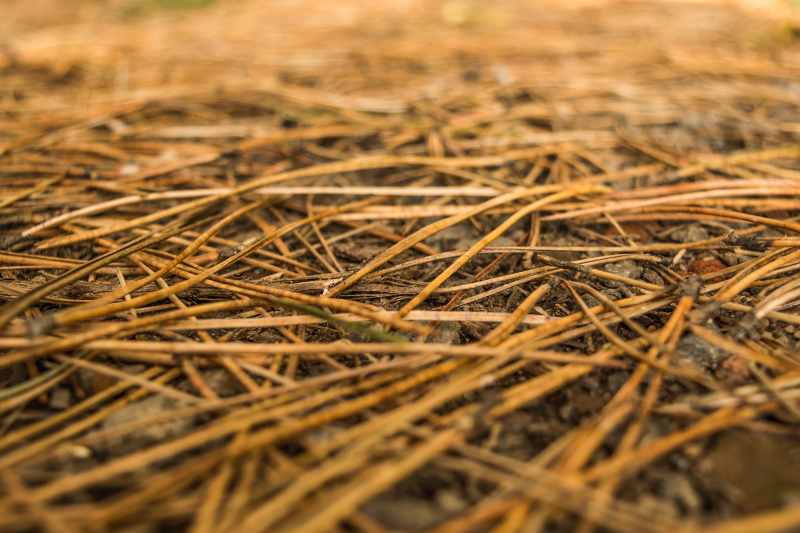Some gardeners avoid using pine needles above all else for fear that it will overly acidify their soil. Others, however, keep them as mulch or even mix them with the planting soil to lower the pH for certain acidophilous plants. This is indeed a common piece of advice found in books and on websites, sometimes even from specialists. But do pine needles or other conifers (cedars, firs, larches...) really influence soil pH? Is it, on the contrary, a bad idea to use pine needles as mulch? Let's clarify!

The Alleged Acidity of Pine Needles
In reality, it is the green needles, still on the tree, that are the most acidic. The brown and dry needles that fall to the ground are much less so: the pH (potential hydrogen) is around 6.5, which is close to neutrality (which is at 7). The optimal pH for most plants is between 6.0 and 7.0. With such low acidity, it is easy to understand that pine needles will have very little impact as mulch at the base of acidophilous plants like heather soil plants (Rhododendrons, azaleas, heathers, kalmias, Andromedas...). Moreover, if you analyse the pH of the soil under a pine and the pH under a deciduous tree in the same soil (for example, in the same garden), you will find that the pH will be the same within a few tenths. You can find here the summary of the conclusions from Norwegian researchers on this subject.
Did you know?: Contrary to what we learned in our chemistry classes, where a solution was acidic below pH 7, neutral at 7, and basic above 7, this notion is shifted for soils. Thus, a soil is considered alkaline at a pH of 6.6. Some plants can grow at quite low pH levels (4.5), but very few can survive in soil with a pH of 8. Fortunately, such soils are very rare.
Some people argue that nothing grows under conifers and that this is indeed a consequence of soil acidification. On one hand, this is not entirely true, as some plants thrive well under pines. On the other hand, it is not this alleged acidity that is the problem, but rather the sometimes dense shade under certain conifers, and the numerous roots that absorb rainwater and nutrients to the detriment of other plants.

Soil pH is Not Easily Modified
The pH of a soil is stable, as it is primarily determined by the parent rock. The soil microflora and some chemical agents act as a buffer to maintain the pH. Therefore, if you wish to modify the acidity or alkalinity of a soil, you will need to use massive doses of sulphur to acidify or, conversely, lime to raise the pH. We do not recommend this for obvious economic and ecological reasons. Moreover, as soon as the application of these products stops, the soil pH will return to its usual level.
The pH thus depends on the subsoil (parent rock), the soil microflora, and, in part, the climate and rainfall of the area. There is also a time factor: a soil will naturally acidify gradually over the decades.
What to Do Then?
If you are used to mulching with pine needles at the base of your acidophilous plants, you can continue, as it does them no harm either. Pine needles make a good carbon mulch, although they are low in potassium. Due to their carbon content, pine needles will also find their place in compost to regulate the carbon/nitrogen (C/N) balance. Furthermore, the tannin contained in pine needles or other conifers has no real inhibitory effect on plant growth. The acidification caused by this mulching is only extremely slight and temporary, but it constitutes a good mulch that decomposes slowly to gradually form humus.
To grow heather soil plants in neutral to alkaline soil, you will need to dig a pit, remove the soil, and replace it with a very acidic substrate: true heather soil or so-called heather soil (be careful, however, as this substrate is poor and does not retain water!).
To learn more about using heather soil, read Heather Soil: How to Use It Well in the Garden?
Otherwise, you can opt for plants that are only suited to your soil, which will save you work and many inconveniences. To plant without making mistakes, you can use our PlantFit application.































Comments